Nikon ECLIPSE Si Upright Microscopes
Ergonomically designed Nikon's upright microscope, ECLIPSE Si brings comfort and precision to your operation with cutting-edge hardware and software solutions.
Ergonomically designed Nikon's upright microscope, ECLIPSE Si brings comfort and precision to your operation with cutting-edge hardware and software solutions.
Focus in comfort. Comfort in focus.
Nikon has designed the ECLIPSE Si to meet the rigorous demands of professionals who spend hours using the microscope. The ECLIPSE Si is ergonomically designed to enhance operational efficiency. This powerful instrument helps you to stay focused for longer by reducing the strain on your body. The ECLIPSE Si is the new standard in microscopes, expanding the possibilities of exploring the micro world.
Pursuing efficient workflow
The ECLIPSE Si has been developed with the primary goal of reducing fatigue during microscope usage. The ECLIPSE Si eliminates unnecessary adjustments and enables efficient and comfortable operation. The ergonomic design also enables natural posture, even when carrying out repetitive tasks.

Maintaining comfortable brightness when switching magnifications
Objectives with different magnifications transmit light to varying degrees. Therefore, light intensity must be adjusted every time the user changes the objective. In addition, when switching from high to low magnification objectives, the sudden increase in brightness often causes eye strain. The ECLIPSE Si features the intelligent Light Intensity Management (LIM) which automatically remembers and sets the light intensity level for each objective. The LIM feature reduces up to 40% of the time spent on adjusting light intensities*. With the ECLIPSE Si, users can increase comfort and save time even when the routine requires frequent magnification changes.

* Compared to the time required for adjusting the light intensity when switching among three different objective lenses. Test was carried out by Nikon, using a previous LED-based microscope model.
LIM feature OFF
Since brightness varies depending on the objective, switching magnifications can induce eye strain.
 |  |
| With high-powered objective | With low-powered objective |
The optimal light intensity level is automatically recalled and applied to each objective, therefore eliminating unexpected changes in light intensity when changing magnifications and streamlining workflow.
 |  |
| With high-powered objective | With low-powered objective |
Low stage for effortless slide replacement
The height of ECLIPSE Si stage is 135 mm, which is about 50 mm lower than our conventional microscopes. The lower stage design reduces the range of motion required to exchange specimen slides, and in turn this can reduce arm and shoulder fatigue. Since the position of the stage movement knob is also lower, different areas on the specimen slide can be easily explored while resting your hands on the table. The lever for opening and closing the specimen holder has also been designed to be ergonomic with an easy-to-operate size and shape. Furthermore, the ECLIPSE Si features a 30% smaller stage compared to our conventional microscopes in order to optimise slide replacement.
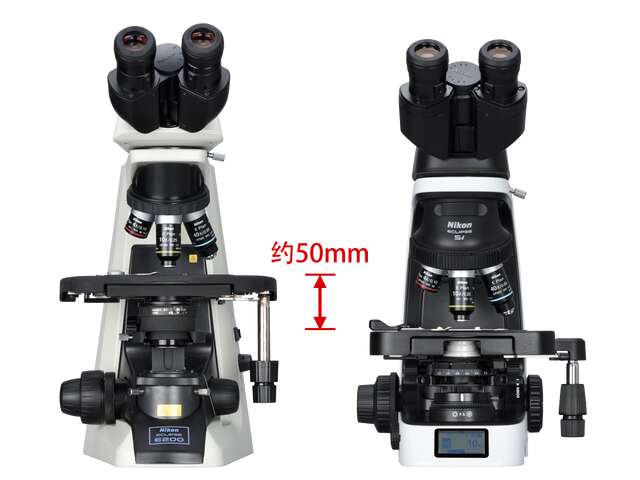 |  |
| Conventional microscope ECLIPSE Si | Easy-to-operate specimen holder |
Enables natural posture to be maintained throughout the entire microscope workflow
The inclination angle of the eyepiece tube is 45 degrees, which enables observation through the eyepieces while maintaining a natural posture. The low stage design also allows you to seamlessly switch from looking through the eyepieces to checking the slide placement on the stage without having to adjust your posture. An optional eye-level riser is also available to further tailor the height of the eyepieces.
 |
|
| Check on the stage while maintaining the observation posture | Eye-level riser |
Worry free focusing thanks to vertical stop
The ECLIPSE Si is equipped with a stopper that can be used to set the upper limit of the stage height. The stage stops at the set height even when the focus knob is turned, thereby eliminating the risk of over-focusing and breaking the slides or damaging the objectives. Specimen exchange and focusing can be performed with confidence, without worrying about the stage height.
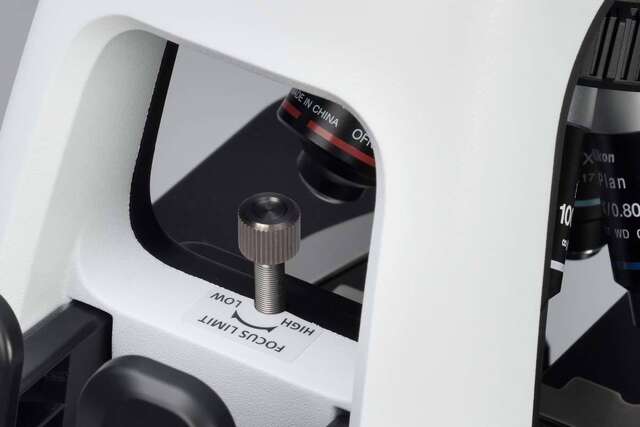 |  |
| Easy operation just by turning the screw at the height you want to set | The stage does not rise above the set height. |
Compatible with a Wide Variety of Observation Methods
Using optional accessories, the ECLIPSE Si allows for a wide variety of observation methods in addition to brightfield.
Brightfield observation
High-quality images can be acquired with bright, uniform illumination over the entire field of view, using objectives with superior image flatness and excellent chromatic aberration correction.

Phase contrast observation
Combining of a phase condenser and phase contrast objectives enables observation of colorless and transparent specimens with high contrast, without staining or labeling the specimens with dyes. A standard Abbe condenser, with a PH slider inserted, also allows phase contrast observation.
 |  |
? CFI DL phase contrast objectives, ? GIF filter, ? Centering telescope And either: ? Phase contrast sliders (set of 2) or ? Phase Condenser with Condenser height adjustment tool |
Darkfield observation
By inserting a slider for darkfield microscopy into the condenser slot and using oblique illumination, light scattered by specimens can be visualized. This method is effective for observation of unstained specimens such as live bacteria and examination of colloidal particles.
The CFI E Plan Achromat 4X objective is not suitable for darkfield observation.
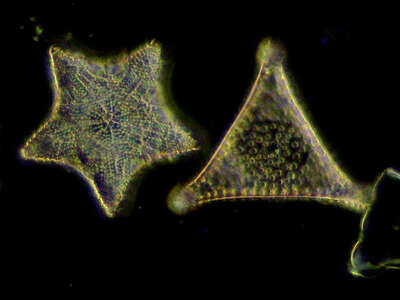 |  |
Simple polarizing observation
By attaching a polarizer to the field lens and an analyzer to the eyepiece tube mount, simple polarizing observation can be performed. The polarization state can be adjusted by turning the polarizer.
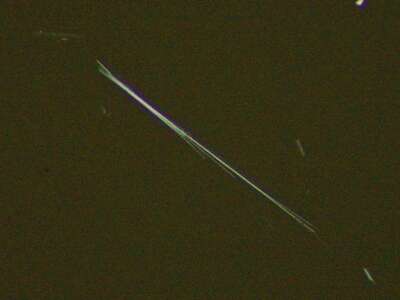 | 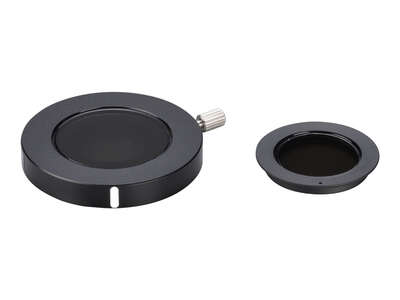 |
Diascopic fluorescence observation
Nikon has developed a unique diascopic fluorescence illumination method that enables easy fluorescence observation without attaching dedicated episcopic illuminator and fluorescence observation equipment. By simply inserting an EX filter slider into the condenser slot and a BA filter slider into the nosepiece slot, fluorescence observation of specimens expressing GFP or stained with fluorescent dyes such as FITC and Alexa 488 can be performed.
 |  |
Digital Sight 1000 microscope camera
Equipped with a 2-megapixel CMOS image sensor, the Digital Sight 1000 can acquire color images and movies of up to 1920 x 1080 pixels. Just connect a monitor* and a mouse, and you can easily capture images without using a PC.
* Via a HDMI cable.

DS-Fi3 microscope camera
Equipped with a 5.9-megapixel CMOS image sensor, the DS-Fi3 can acquire high-resolution color images of up to 2880 x 2048 pixels*. Its excellent color reproducibility enables the acquisition of images with colors faithful to those of the images observed under the microscope. Its high sensitivity also makes the DS-Fi3 ideal for acquiring fluorescence images.
* NIS-Elements L imaging software is required for controlling the camera.

NIS-Elements L imaging software
By connecting the Digital Sight 1000 or DS-Fi3 to a tablet PC with NIS-Elements L installed, images of specimens under observation can be shared with other PCs via a network. The software also contains a variety of measurement and annotation functions.

Teaching Head
Enables simultaneous observation by two people using the same microscope. Available in two types: face-to-face type and side-by-side. Areas of interest can be indicated with the built-in LED pointer.
 |
| Face-to-face type Side-by-side type |
Eye-level Riser
By mounting the eye-level riser under the eyepiece tube, the eyepoint can be raised by 25 mm. The height of the eyepiece can be adjusted to fit the observer, which allows observation in a comfortable posture.
